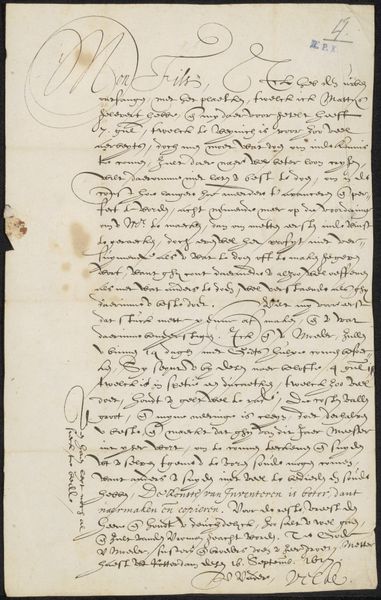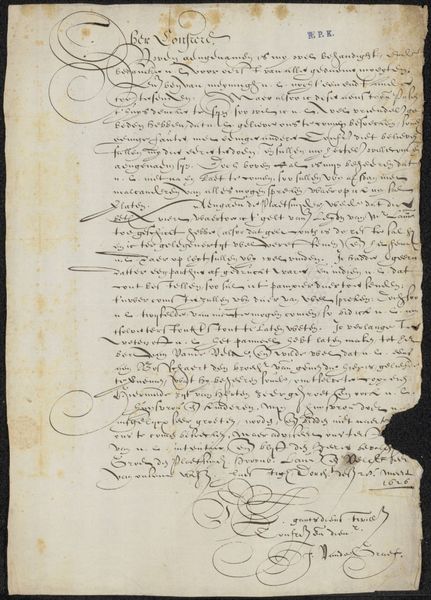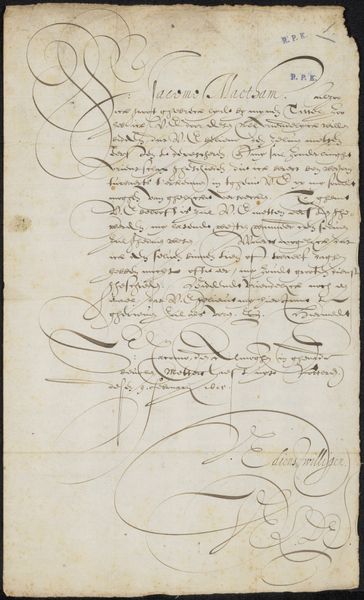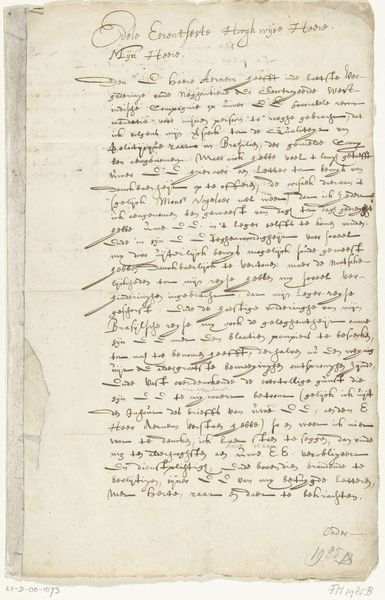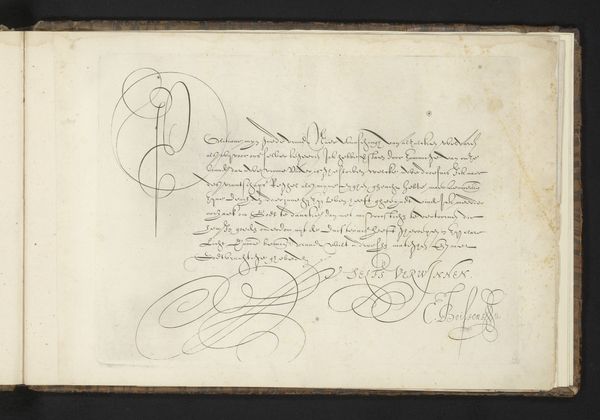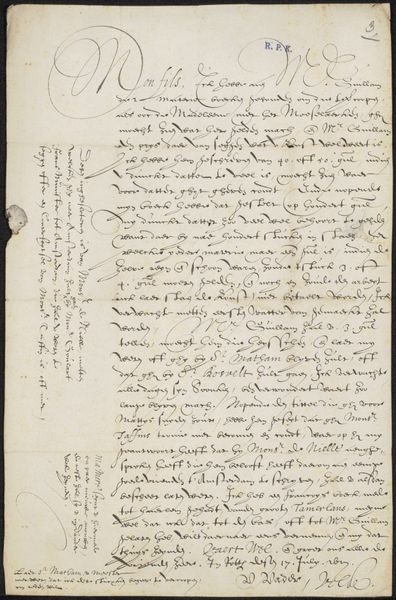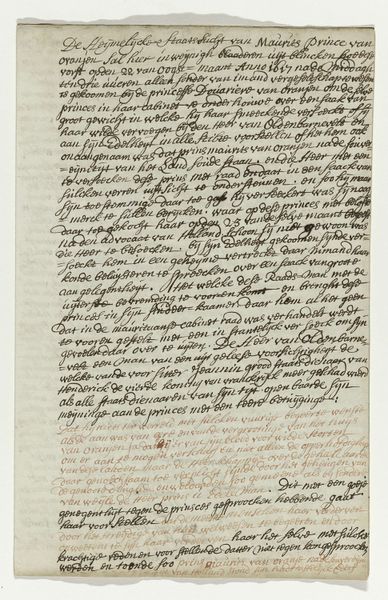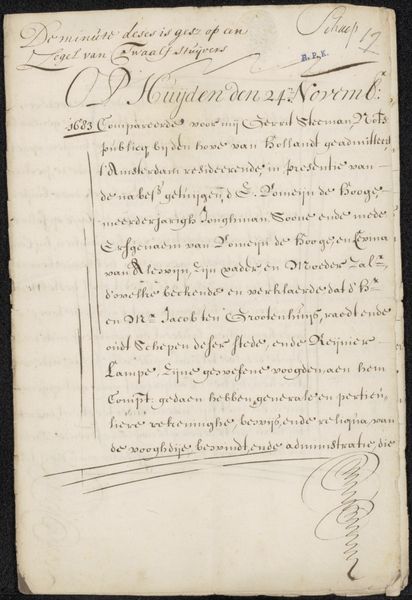
drawing, textile, paper, ink
#
drawing
#
dutch-golden-age
#
textile
#
paper
#
ink
#
calligraphy
Copyright: Rijks Museum: Open Domain
This is a letter to Constantijn Huygens, made in 1656 by Abraham de Verwer. It is made of paper, and ink, both everyday materials that were widely available in the 17th century due to increasingly standardized manufacturing and trade. The letter's material qualities—its thinness, its pliability, its capacity to absorb ink—were all essential to its function. The physical act of handwriting, with its skilled gestures and careful application of ink to paper, imbued the message with a sense of personal touch. Think about the labor involved in producing these materials. The paper from pulped rags, the ink from soot and binding agents. While seemingly humble, they were products of a complex web of production and consumption. Consider the human effort required to transform raw materials into something as seemingly simple as a sheet of paper or a pot of ink. In this light, even a simple letter becomes a testament to the intricate relationship between materials, making, and society.
Comments
No comments
Be the first to comment and join the conversation on the ultimate creative platform.
